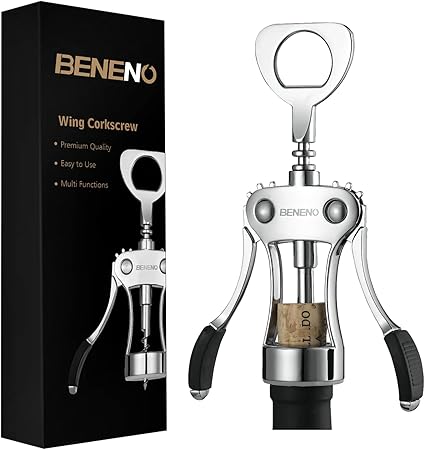Master the Art of Wine Decanting: A Complete Guide
Wine decanting is an ancient art that transforms your wine experience by enhancing flavors, aromas, and overall enjoyment. Learn the science behind decanting and master the techniques that will elevate your wine service to professional levels.
What is Wine Decanting?
Decanting is the process of transferring wine from its bottle to a decanter, typically to separate sediment from older wines or to aerate younger wines. This process serves multiple purposes:
- Sediment Removal: Separates unwanted particles from older wines
- Aeration: Exposes wine to oxygen to enhance flavors
- Temperature Adjustment: Allows wine to reach optimal serving temperature
- Presentation: Creates an elegant serving experience
Featured Product: Wine Decanter with Built-in Aerator

Wine Decanter with Built-in Aerator
This premium crystal glass wine decanter features a built-in aerator pourer for enhanced wine flavor. Made from 100% lead-free crystal glass, it provides smooth pouring and optimal aeration.
View on AmazonWhen to Decant Wine
Older Wines (5+ years)
Older wines often develop sediment and benefit from decanting to:
- Remove sediment and particles
- Separate clear wine from deposits
- Improve clarity and appearance
- Enhance delicate aromas
Younger Wines
Younger wines benefit from decanting for:
- Aeration to soften tannins
- Flavor development and complexity
- Temperature adjustment
- Presentation enhancement
Wines That Don't Need Decanting
Some wines are best served directly from the bottle:
- Very old, fragile wines
- Delicate white wines
- Sparkling wines
- Wines meant to be consumed immediately
How to Decant Wine Properly
Step-by-Step Decanting Process
- Prepare the Decanter: Ensure your wine decanter is clean and dry
- Stand the Bottle: Let older wines stand upright for 24-48 hours
- Remove the Cork: Carefully remove the cork without disturbing sediment
- Pour Slowly: Pour wine in a steady stream, watching for sediment
- Stop Before Sediment: Stop pouring when sediment reaches the neck
- Let it Breathe: Allow wine to aerate for 30 minutes to 2 hours
Decanting Techniques
Traditional Decanting
Pour wine slowly and steadily, watching for sediment. This method is ideal for older wines with visible sediment.
Aerator Decanting
Use a decanter with built-in aerator like our featured decanter for immediate aeration during pouring.
Double Decanting
Pour wine into decanter, then back into the original bottle. This method provides maximum aeration.
Choosing the Right Decanter
Decanter Shapes and Their Purposes
- Wide-Bottom Decanters: Maximum aeration surface
- Narrow Decanters: Elegant presentation
- Built-in Aerators: Convenient aeration during pouring
- Traditional Decanters: Classic wine service
Material Considerations
Choose decanters made from:
- Crystal Glass: Premium quality and clarity
- Lead-Free Crystal: Safe for food contact
- Borosilicate Glass: Durable and heat-resistant
Complementary Wine Service Accessories
Complete your wine service setup with these essential accessories:

Wine Glasses
Serve your decanted wine in premium wine glasses designed to enhance the tasting experience.
Decanting Timing Guidelines
How Long to Decant
- Young Red Wines: 30 minutes to 1 hour
- Mature Red Wines: 1-2 hours
- Full-Bodied Reds: 2-4 hours
- White Wines: 15-30 minutes
- Port and Dessert Wines: 1-2 hours
Common Decanting Mistakes
Avoid these common decanting errors:
- Over-decanting delicate wines
- Not allowing enough time for aeration
- Using dirty or soapy decanters
- Pouring too quickly and disturbing sediment
- Not considering wine temperature
Cleaning and Maintaining Your Decanter
Proper care ensures your decanter remains in perfect condition:
- Rinse immediately after use
- Use warm water and mild detergent
- Avoid abrasive cleaners
- Dry completely before storing
- Store in a dust-free environment
Conclusion
Mastering wine decanting enhances your wine experience by improving flavors, aromas, and presentation. The Wine Decanter with Built-in Aerator makes decanting effortless while providing professional results.
Remember, decanting is both an art and a science. Practice with different wines to understand how decanting affects each type, and soon you'll be creating memorable wine experiences for yourself and your guests.
Ready to Master Wine Decanting?
Explore our complete collection of wine decanters and service accessories.
View All Products

